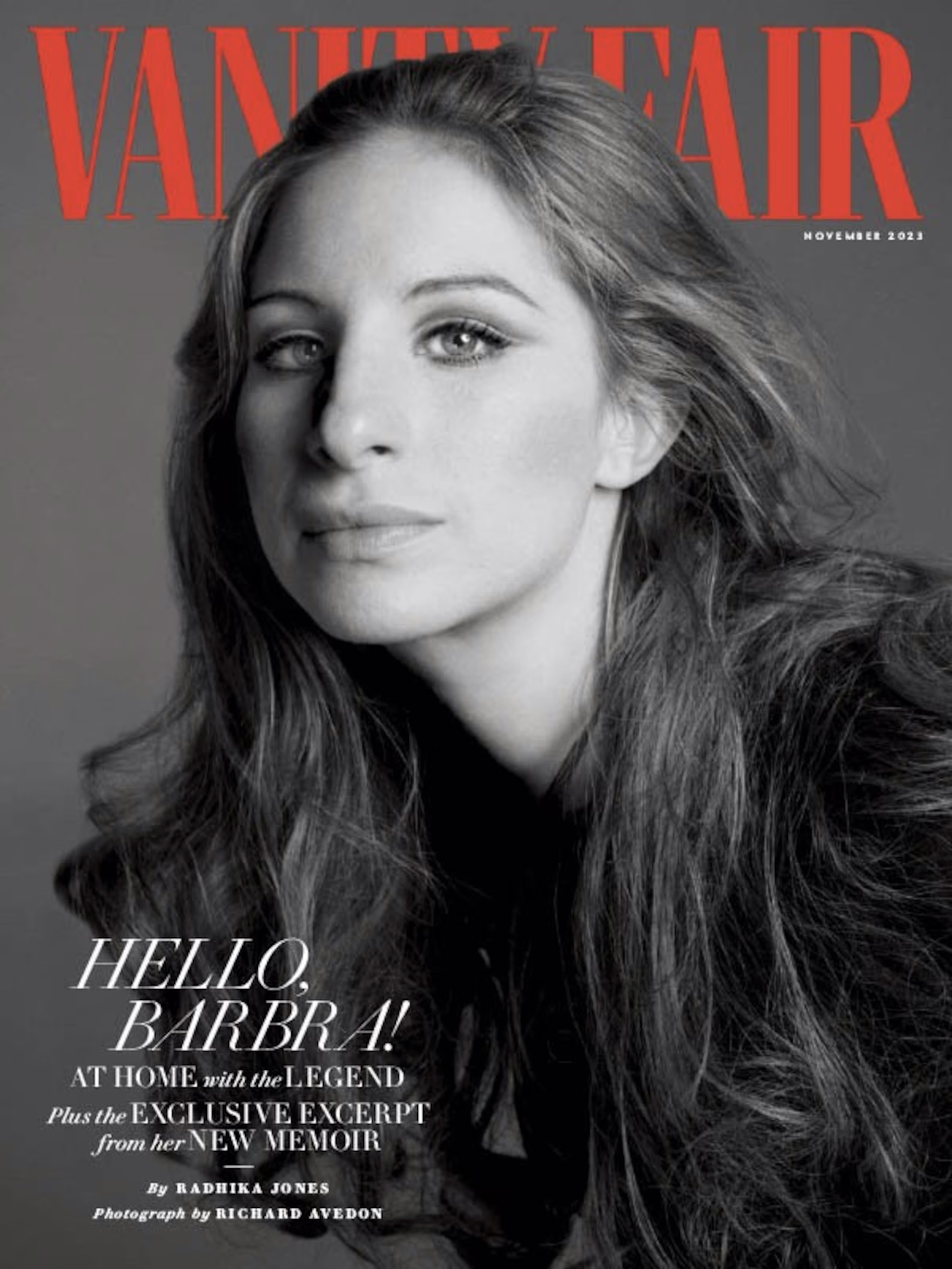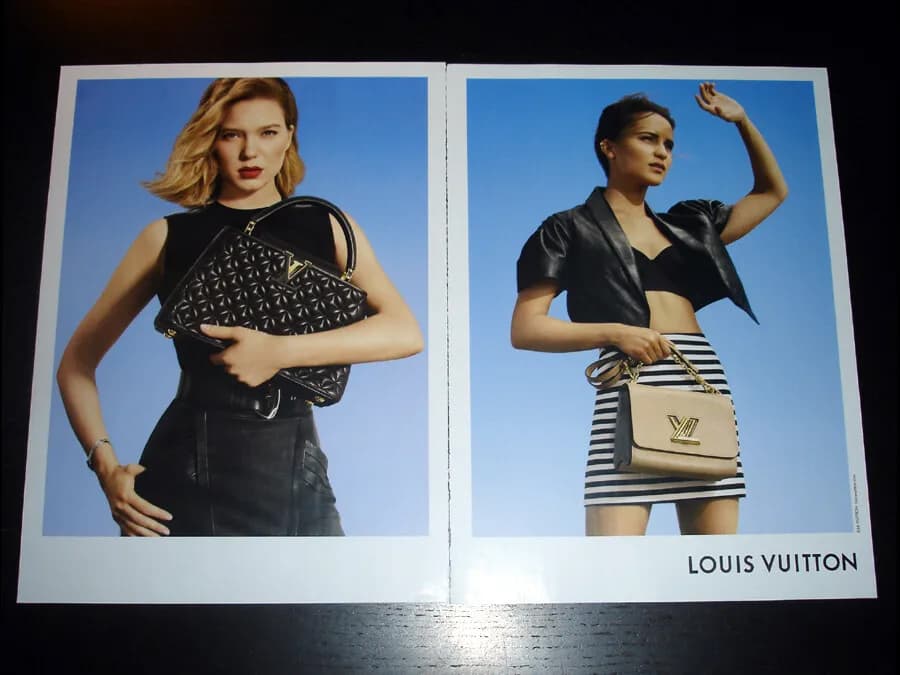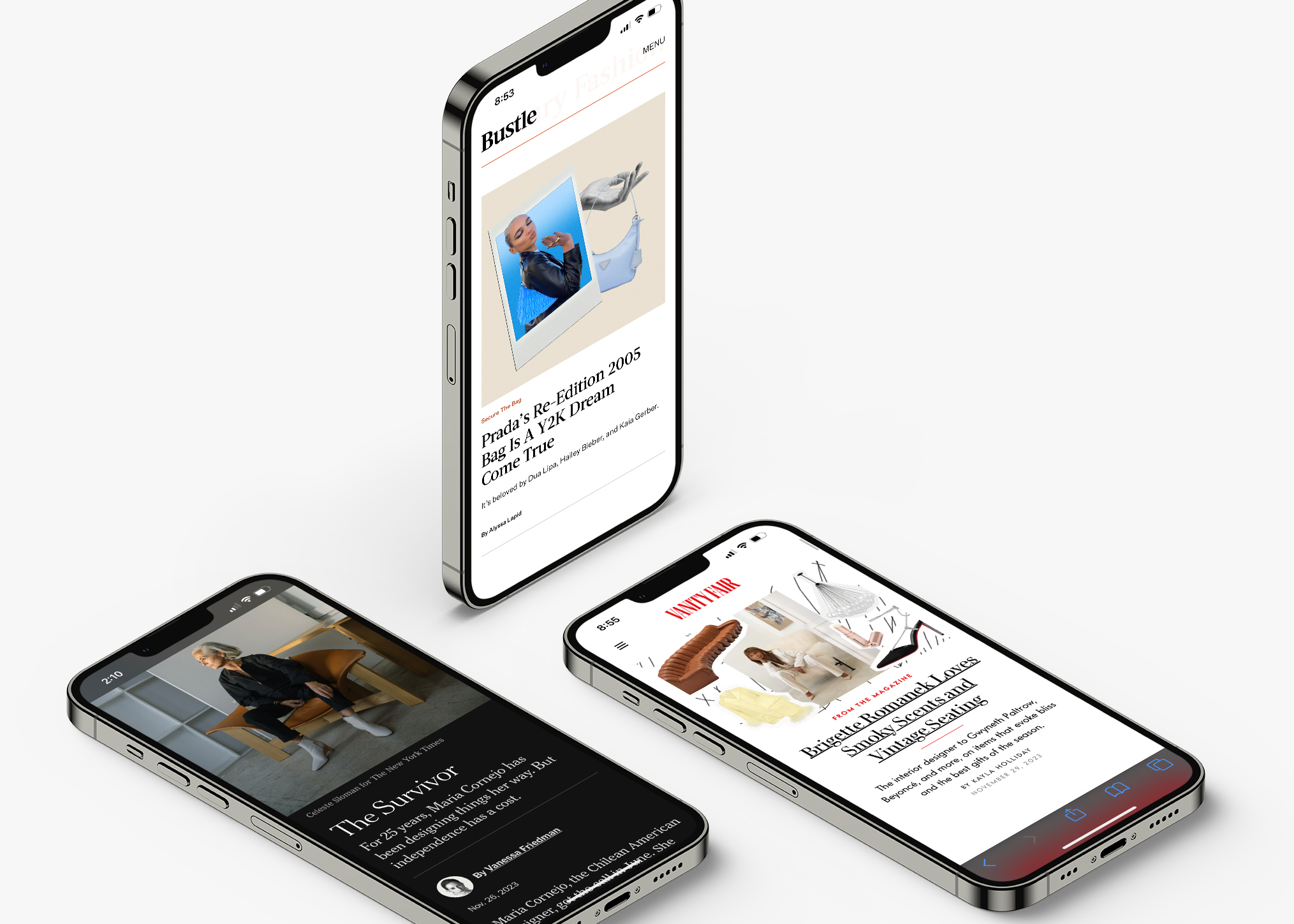Changing Tides in PR: Adapting to a Shifting Media Landscape
By Carrie Crecca Maitoza
Must have relationships! This is a prerequisite for any PR professional found in any PR job description no matter the title. As an industry standard, editor relationships are the most enticing hook in a PR professional’s skillset. Picture a typical morning in a PR office: a team huddled around a table, coffees all around, discussing a recent piece of brand coverage they secured and taking a moment to revel in the win, when suddenly a senior executive bursts in, “Do you know the writer that wrote this 3-page feature on X brand this morning and why wasn’t it us?????!”
This scene, all too familiar to PR people everywhere, perfectly encapsulates a problematic and antiquated expectation. It illustrates the unfair pressure placed on PR professionals to have instant connections with key media figures at the drop of a hat, a demand rooted in a bygone era of public relations.
Such ambushes often paint an inaccurate picture of a PR team’s competence. They ignore the intricate, multi-layered nature of crafting a compelling brand story and securing media coverage. It’s not just about who you know; it’s about understanding the evolving media landscape, aligning with the right voices at the right time, and the strategic orchestration of messaging. This scenario begs a critical question at the core of modern public relations: If not the breadth of editor relationships, then what truly defines the effectiveness of today’s PR professionals?
In an industry where change is the only constant and the media world continuously shifts, it’s time to reassess the weight we place on traditional metrics of success in PR. This article challenges the long-held belief that a PR professional’s worth is solely measured by their quantity of media contacts and across all kinds of brand visibility verticals (there are so many now!), and proposes a more nuanced and adaptable approach– a revised belief system– to what makes up a successful public relations effort.
Key Takeaways:
Sure, having a network of editor contacts is significant, but let’s not fool ourselves into thinking that’s the be-all and end-all of public relations. There’s a whole spectrum of qualities that, frankly, don’t get enough credit in the eyes of many in our industry and the belief system that editor relationships are everything is stubbornly encoded. What we really need in the throbbing heart of PR is a breed of professionals who don’t just ride the waves of change but actually steer through them with finesse. We’re talking about people who can effortlessly pivot as the PR and editorial landscapes morph and evolve. It’s time we acknowledge and value these unsung skills that truly keep the PR world spinning on its axis.
Index
- Editor Relationships are Important, but They’re Not Everything – So, What Are We Missing?
- Hiring Managers Should Most Stress Editor Relationships in PR Manager and PR Director Roles; Let Everyone Else Off the Hook
- The Most Prestigious Luxury Brands Do Not Need Publicists with Incredible Editor Relationships
- We Need to Treat Media Relations like the Job it Is, and Encourage it to be Performed During Work Hours
- Business Based in Human Relationships is Fickle, Just Like Humans Are
- Conclusion
Editor Relationships are Important, but They’re Not Everything – So, What Are We Missing?
It’s a truth universally acknowledged in our industry that PR people and editors are intrinsically linked. However, this relationship is not set in stone. The dynamic nature of this world often leads to a situation where an editor who was once integral to a brand’s coverage at one publication becomes “irrelevant” when they shift to another. Does this mean the PR professional, once seen as well-connected, loses their edge? Such a viewpoint on both sides of the coin (for PRs and editors also) is harsh and unrealistic in a world where change is inevitable.
In reality, a plethora of factors shapes a PR professional’s network, which transforms as they progress through their career, adapting to the values and direction of each company they represent.
The following skills are integral to PR success:
- Strategic Thinking: PR professionals need to be highly strategic, focusing on understanding and aligning with the brand’s vision and adapting their strategies accordingly.
- Attention to Detail and Foresight: They should possess an acute attention to detail and the ability to anticipate and navigate nuanced problems.Communication Skills: The ability to elicit responses through effective written and verbal communication is crucial.
- Soft Skills: Skills like reading a room, acting as a mediator, and making others feel seen are important. Emotional intelligence, while a buzzy word of the moment in HR offices everywhere has always been an integral piece of the PR skillset. PR professionals are dealing with human beings, afterall.
- Cultivating Relevant Relationships: Rather than just having existing relationships, the emphasis should be on the ability to cultivate and maintain important media relationships that are relevant to the brand’s current needs and goals.
- Adaptability: PR professionals must be able to adapt to continuous changes in the industry and in editorial teams.
- Problem Solving: They should be capable of brainstorming and troubleshooting and advocating for tools needed to achieve strategic goals.
Considering these diverse and essential qualities, it’s time to shift our focus. Instead of prioritizing relationships with priority press at the time of hiring, what if we emphasize a candidate’s ability to adapt to the rapidly evolving industry, coupled with an understanding of the brand’s vision, to cultivate relevant relationships over time? This approach, more aligned with the fluidity of the fashion world, offers a more comprehensive and strategic way to evaluate and hire PR professionals, rather than basing decisions on whether they know the “coolest” editor at any given moment.


Hiring Managers Should Most Stress Editor Relationships in PR Manager and PR Director Roles; Let Everyone Else Off the Hook
While we’ve established that editor relationships, though important, are not the be-all and end-all, it’s crucial to pinpoint where these connections hold the most value. It’s unproductive to expect every PR professional, regardless of their role or seniority, to sustain tight-knit connections everywhere. This one-size-fits-all expectation asks too much of those just starting out and for seasoned pros who have “been there, done that,” moving beyond constant media entertaining into more strategic, overarching roles.
The sweet spot for nurturing deep editor relationships lies within the realms of PR Managers and Directors.
This isn’t just about who’s dining with whom; it’s about who’s out there on the frontline, pitching, and weaving stories into the media tapestry. Managers, with their fingers on the pulse, handle the day-to-day pitching for the most part, while Directors play the long game, crafting narratives for the more seasoned editorial eyes.
But expecting editor BFFs at every career stage? That’s like asking a seasoned chef to focus only on chopping vegetables. Consider a publicist who has ascended to a senior vice president position, having built relationships with industry stalwarts like Sally Singer, Jim Moore, and Robbie Myers. As the media landscape shifts, these once-powerful connections might not hold the same sway, leaving seasoned PR professionals in a conundrum. Are they to be considered out of touch? No longer well-connected? Old?
In questioning this notion more deeply, it becomes absurd, putting undue pressure on PR professionals at all levels to maintain a certain caliber of editor relationships. When we keep strong editorial relationships on a pedestal across every PR title, we unconsciously perpetuate dangerous, age-ist messaging. Instead, let’s place value where it’s due: on the ability of PR Managers and Directors to foster these relationships, while empowering others in the team to leverage their unique skills and experiences. By doing so, we’re not only acknowledging the varied stages of a PR career but also championing a more dynamic and inclusive approach to public relations.
The Most Prestigious Luxury Brands Do Not Need Publicists with Incredible Editor Relationships
Hear me out! A brand’s monetary media footprint wields so much power when it comes to editor relationships and secured press. This is a reality often ignored when it comes to assessing the qualifications of a PR person for an open role on our PR teams. For example, PR teams at legacy houses like Louis Vuitton, Prada, Valentino, Dior and many others made up of the most well-connected publicists is somewhat a case of wasted energy and potentially subjects these kinds of brands to talent blind-spots, quite frankly.
Relationships at a brand with so many dollars allotted to its media footprint creates a dynamic where editor relationships are guaranteed.
Brand executives would be wise to take a deeper look at their business when building out their communications teams. Consider questions like:
- What is your advertising, branded content, and affiliate marketing budget?
- Where is your brand contributing to the myriad modern revenue streams of its priority outlets and how does it compare to your competition?
- What has the reaction of the press been to your brand at this stage in its lifecycle?
- How much of your visible activity as a brand is conceived in your immediate office vs. overseas?
- Do you think you need an expert to help better craft your brand image and messaging?
- Do you need an entrypoint with press?
These areas help take a look at where your business currently sits in terms of brand image and what type of publicist would benefit it.
Established and strong editor relationships will be most important for smaller brands without a budget for media spend like emerging American-market luxury, for example. If we look at PR agencies, solid relationships are a factor when hiring, but it should be acknowledged by the hiring manager that the frequency of editor face-time is naturally much higher in agency roles and is reflective of varied client activities. Agency PR people can often have facetime with the same editor 2-3x per week depending on the time of year and therefore will quickly solidify relationships that may not already be there at the time of hire if we’re speaking on frequency alone.
It should also be noted that editors obviously have discerning taste and publicists who work for the most niche and covetable brands with a fresh story and aesthetic, even without advertising dollars attached to them will have an easier time.
Not to undermine the connections of PR people everywhere, but an uncomfortable truth is that we often underestimate how much the brand itself influences the relationship.




We Need to Treat Media Relations like the Job it Is, and Encourage it to be Performed During Work Hours
We all know that fostering meaningful connections and lasting relationships takes a little time, just like it does in all other areas of life for everyone. As brand leaders, we need to give PR people the necessary time and space to perform this strategically during work hours to evolve the function of media relations forward.
The early aughts were all about “drinkies” after work where the majority of media relations occurred, but in a post-pandemic workplace where hybrid work schedules are more common, it’s more challenging to meet up and the participating parties no longer want to. The pandemic offered everyone a taste of what it’s like to not be overcommitted each week, offering the chance to opt out of the hustle culture – and they want it to stay that way for the most part. The rise of Gen-Z to the workplace has showcased a strong value on mental health and has defined what employees will no longer tolerate.
If strong media relationships are immensely important to your brand, you must provide the container and permission for this to occur during daytime work hours as part of the PR team’s responsibilities, just like drafting a press release is. We should also acknowledge that absence from the office is the trade-off when media relations are so important, and acceptance of that must be reached by management.
Business Based in Human Relationships is Fickle, Just Like Humans Are
PR people are not their editor relationships. Humans are unpredictable and fickle. To uphold the idea that a PR person’s skill and ultimately their self-worth is wrapped up in who they know is not kind, progressive, or true. However this is the standard PR people are held to without relief as they ascend in their career.
For instance, I recall attending an Editor in Chief’s far-flung destination wedding who much later promised me a story, confirmed the coverage, and then ghosted me without explanation. While annoying, I didn’t take it personally and my manager at the time should not have doubted my friendship with said editor, either. It wasn’t her place.
The solution lies in changing our approach. The industry needs to acknowledge that vying for editor attention in a saturated and competitive environment is unsustainable. Editors, overwhelmed by countless pitches, often have to make tough choices, sometimes sidelining brands that don’t align with their outlet’s vision or advertising interests. And that’s OK. Brands should focus on finding their unique editorial niche, developing a specific and authentic identity. Not every brand needs to appeal to everyone – in fact, embodying specificity and uplifting the differentiating factors of your brand makes things more interesting, anyway.
Conclusion
Debating the importance of editor relationships for PR teams will naturally vary from brand to brand, however, this aspect of the profession has been held on a pedestal for too long. As we’ve seen, the value of these relationships can ebb and flow throughout a PR professional’s career, and it’s time we recognize that this isn’t the only measure of a publicist’s value. As the changes in the mediascape keep coming, we must evolve our narrative and biases. We need to understand that fostering editor relationships takes time and adaptability in a changing industry, and not every PR professional needs to maintain intense relationships with editors at every stage of their career.
When we keep the onus on a PR person’s individual editor relationships as the defining factor as to what it takes to get quality press on the page, we place blame on an individual and eliminate the reality that secured press is a holistic and strategic process. By widening our view of what our PR professionals can do and valuing their unique skill set, we allow for increased understanding and connection with our PR teams leading to better results.
